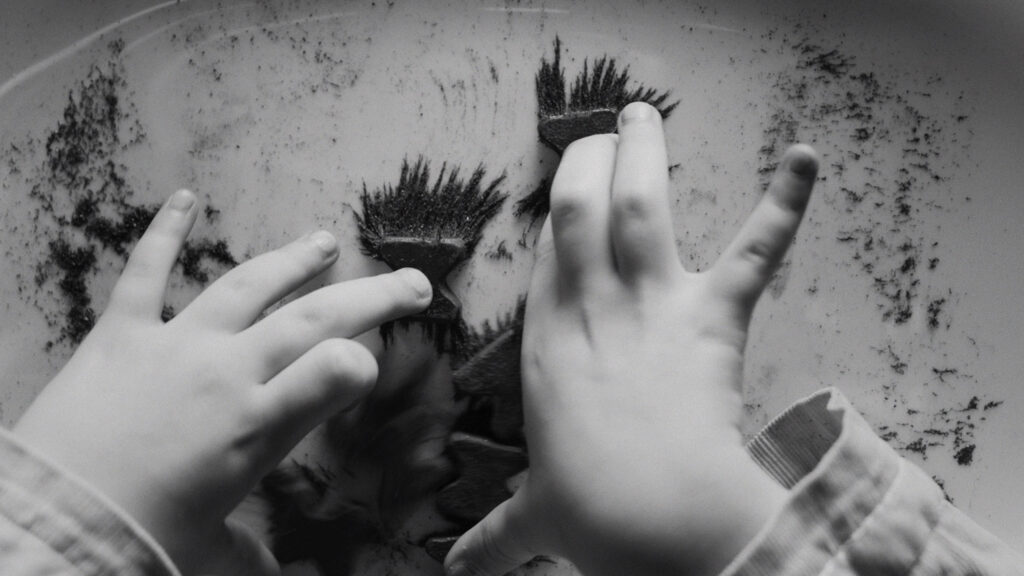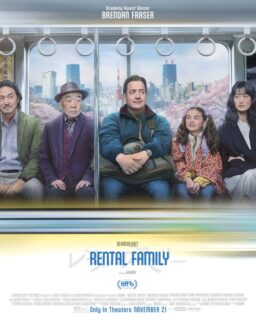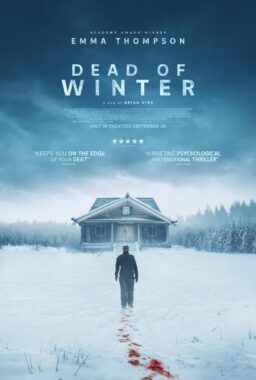“Iron Butterflies” is an impassioned, almost obsessive look at the tragedy of flight MH17, a commercial flight that was found to have been shot down by Ukrainian militia using Russian missiles in 2014. Russia has denied involvement; director Roman Liubyi’s documentary “Iron Butterflies” is a stunning compilation of found material—many staggering, bleak, and ridiculous pieces—that says a great deal otherwise.
It’s a large testament to how the information age has changed investigatory doc filmmaking—(practically) everything is online, you just have to find it. Going down this rabbit hole fires up Liubyi even more as a modern visual artist, who largely stays behind a computer and is only heard as a voice. In a choice that’s as disturbing as it is economical, he depicts the flight’s doomed path as an airplane icon moving across Google maps, the bassy hum of an engine and nondescript chatter of a family accompanying our dread of when the icon will disappear.
Liubyi sometimes directs the film with a bleakly funny dryness, showing things as they are using social media, and at one point, including old Russian propaganda videos that make the missiles that shot down MH17 seem quaint. Photos of smiling soldiers posing with the wreckage are scrolled through with a matter-of-fact nature. It can be a cold approach built from rampant information, but that feeling is countered by Liubyi’s evident and deep compassion for those who died in this tragedy. The movie is dedicated to them and the victims of Russia’s aggression against Ukraine.
The rage within Liubyi’s direction also extends to his version of a reenactment—interpretive dance scenes in black and white, fever dreams meant to be taken literally. But they are perhaps too on-the-nose at some points, like when soldiers with blurred-out faces are covering the mouths of, and dancing with, the citizens who lived near the wreck. There are other artistic flights of fancy, like a later sequence that dreams about the four pigeons that were on the flight log, rendered with animation inspired by child-like drawings. One of the most haunting elements is its soundscape, which pays tribute to lost lives through the jagged sounds made from a deconstructed piano.
“Iron Butterflies” is art raging against injustice, though it is aware of how much the information age can also magnify overpowering, false narratives or help sweep a flight like MH17 under the proverbial rug. Liubyi passionately assembles the pieces to this testimony of a broken system, using a cinematic cynicism that is often moving in a way optimism is not.

Also premiering in the World Cinema Documentary competition, “Is There Anybody Out There?” is the years-long search by burgeoning filmmaker Ella Glendining to find more people, or at least one person, like her. She was born without hip joints and has very small thigh bones; her mother’s doctors had never seen anything like it. There’s little information available about her condition, but she begins looking Facebook for anybody with something similar, especially those who have received surgery to adjust their mobility. Glendining captures her adventure of searching in this heartfelt documentary, with powerful other life stories included to offset a generic presentation.
The film’s title comes from a Facebook post, which is just the beginning of Glendining’s adventure that also includes major life chapters. In the process of making the documentary, she becomes a mother and endures COVID, both of which inspire moments of reflection about the very movie she’s making and what she wants to say. Glendining interviews her parents about what they felt about her disability—the love they immediately and always felt for her is evident, especially in their warming home footage of young Ella. This warmth challenges the ableist thinking that Glendining wrestles with, that of thinking that a surgical procedure is the best option.
Throughout, Glendining voiceover confides in us like journal entries, offering her perspective: “That feeling of being the only one in the room, that’s all I know.” Getting to know her perspective makes it all the more impactful when she does connect with others, like the lively make-up artist Priscilla and hilarious YouTube star Ricardo. In hangout scenes, they share their experiences, and thoughts on how the world may see them.
Glendining’s film also looks back at previous media representations of people with similar conditions, including a schoolboy in a BBC report whose story is shared in a less supportive fashion. Her interview with him, which has more than one surprise, is one of the film’s most powerful moments. Getting to know everyone’s journey here, including that of Glendining, is the movie’s greatest gift.












